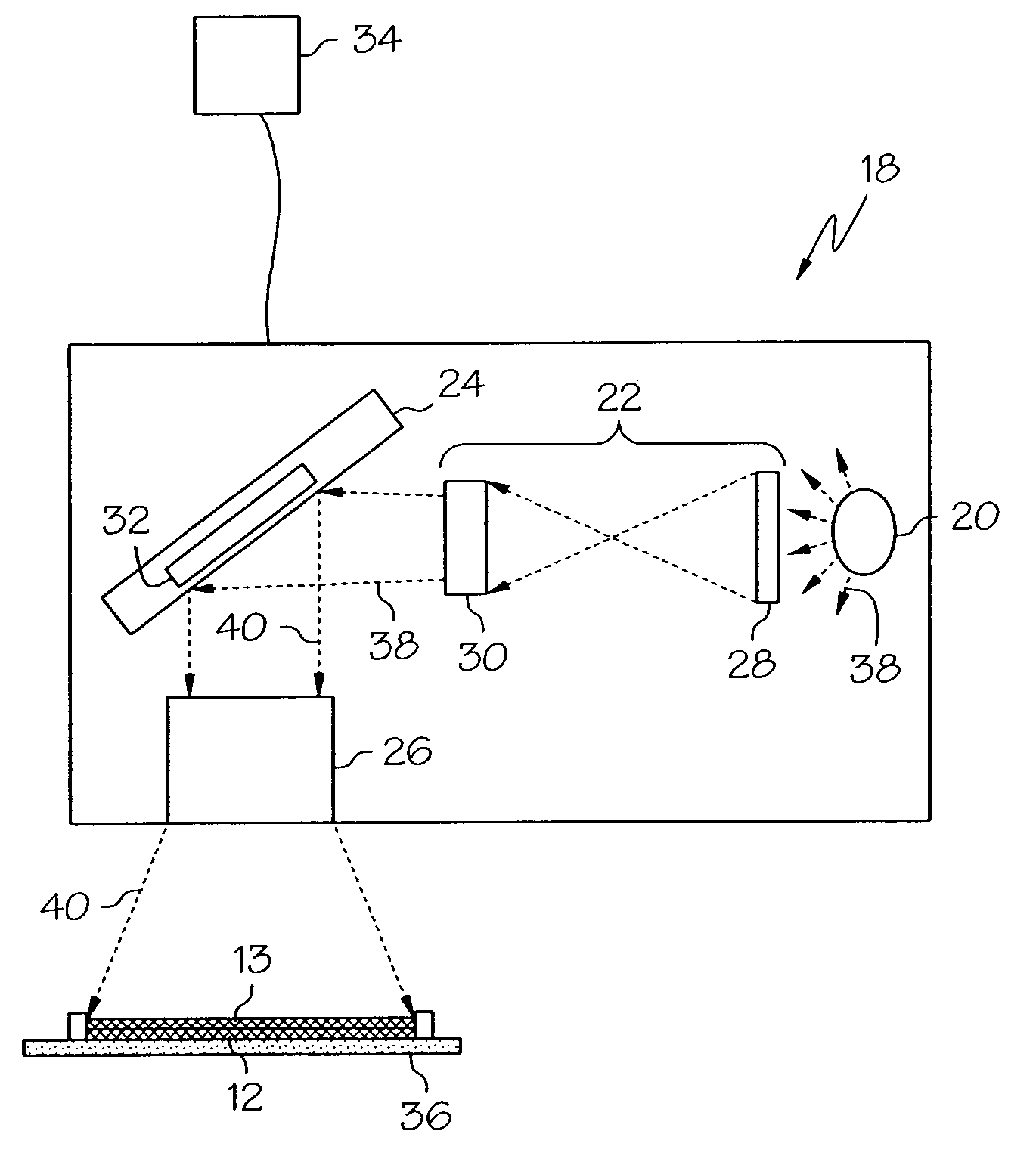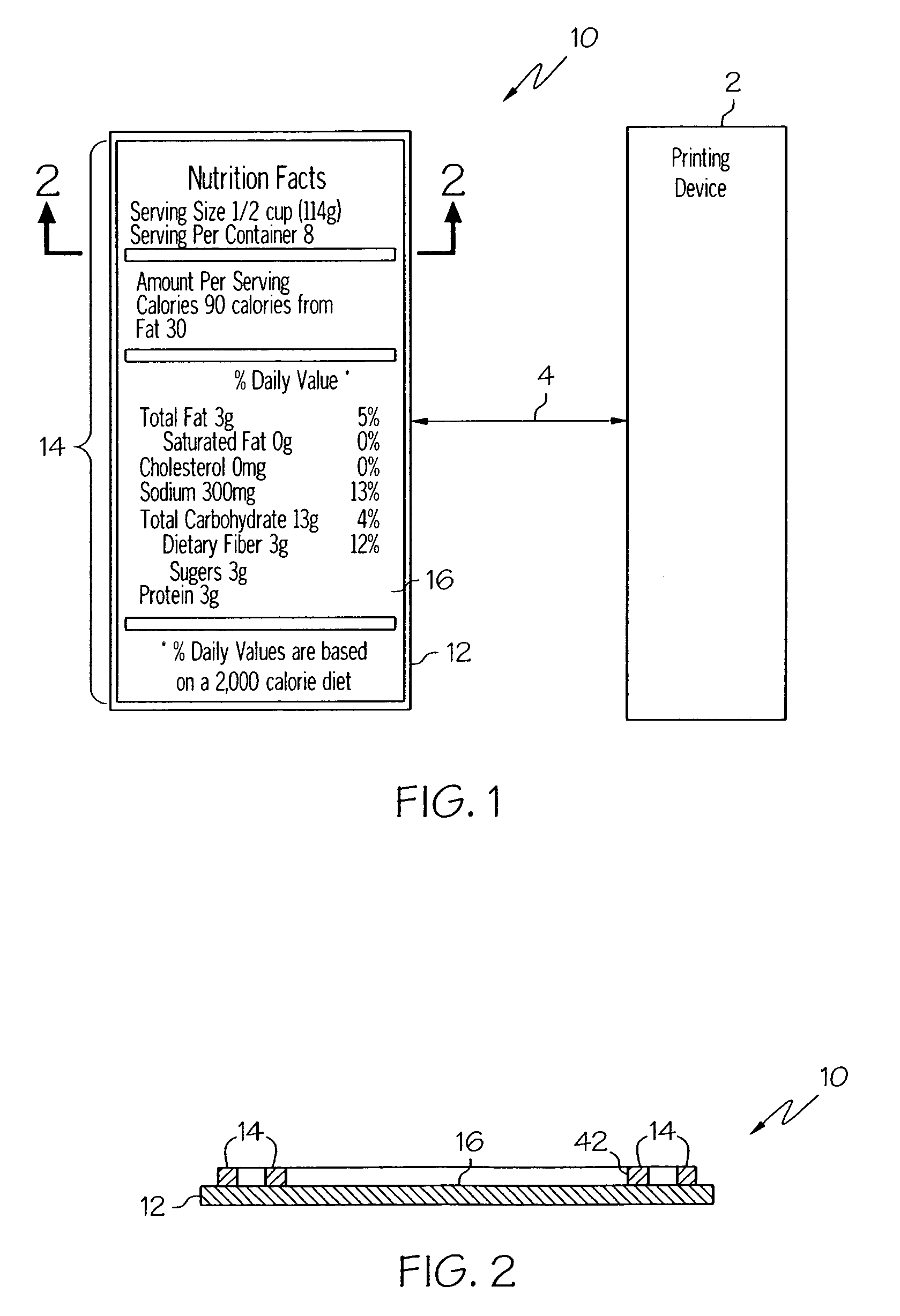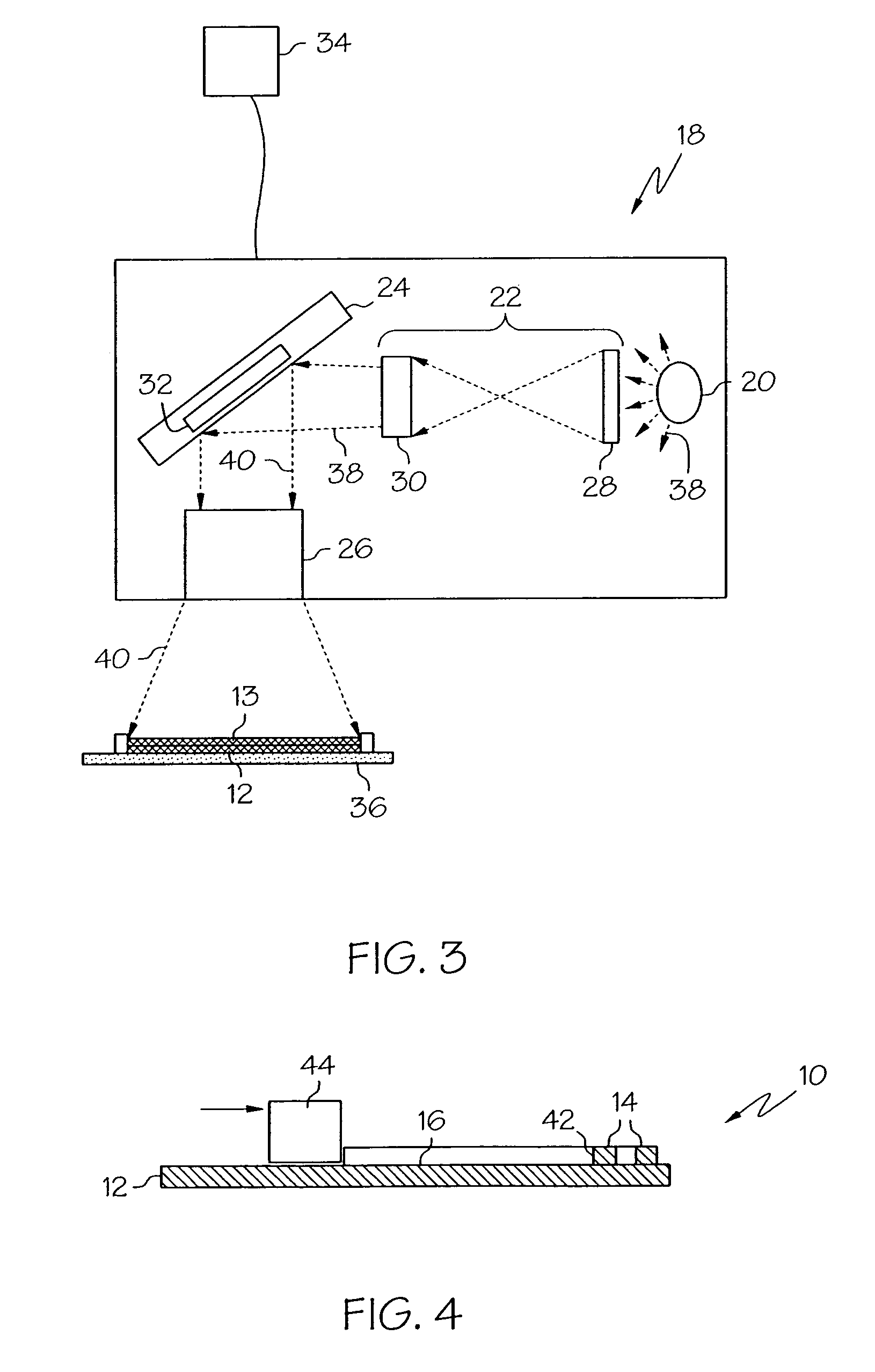Image replication element and method and system for producing the same
- Summary
- Abstract
- Description
- Claims
- Application Information
AI Technical Summary
Benefits of technology
Problems solved by technology
Method used
Image
Examples
Embodiment Construction
[0027]FIGS. 1 and 2, illustrate a preferred embodiment of the present invention in which an image replication element 10 comprises a support assembly or base 12 supporting a raised relief image 14 on its surface 16. As illustrated schematically in FIG. 1, the image replication element is preferably mounted as a printing plate on a printing device 2 to print the relief image on a provided substrate, such as for example a web or sheet of paper, plastic, foil or the like. After use, the image replication element 10 may be readily demounted from the printing device 2. As the mounting and demounting processes of the image replication element, which is indicated by the numeral 4, are conventional in the art, no further discussion is provided.
[0028]Although, the image replication element 10 of the present invention may be utilized as a flexographic printing plate, it is to be appreciated that with suitable modifications, the image replication element may also be useful in other direct and ...
PUM
 Login to View More
Login to View More Abstract
Description
Claims
Application Information
 Login to View More
Login to View More - R&D
- Intellectual Property
- Life Sciences
- Materials
- Tech Scout
- Unparalleled Data Quality
- Higher Quality Content
- 60% Fewer Hallucinations
Browse by: Latest US Patents, China's latest patents, Technical Efficacy Thesaurus, Application Domain, Technology Topic, Popular Technical Reports.
© 2025 PatSnap. All rights reserved.Legal|Privacy policy|Modern Slavery Act Transparency Statement|Sitemap|About US| Contact US: help@patsnap.com



